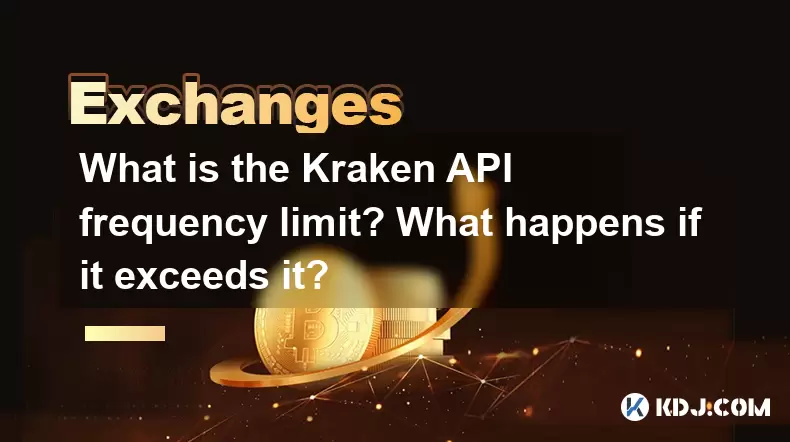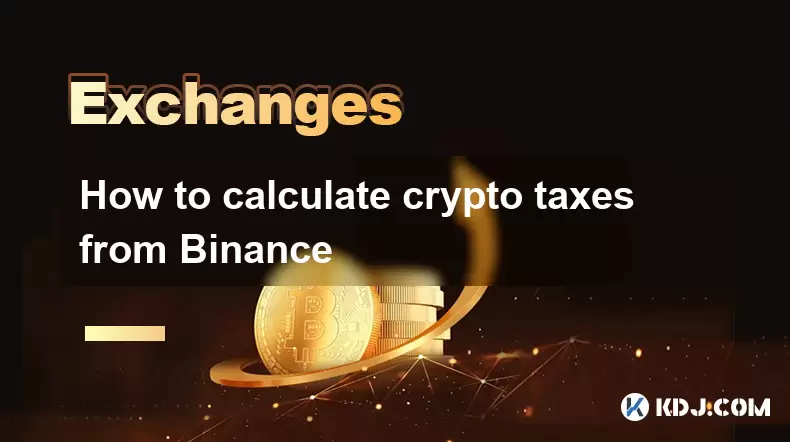-
 Bitcoin
Bitcoin $117500
2.15% -
 Ethereum
Ethereum $3911
6.19% -
 XRP
XRP $3.316
10.79% -
 Tether USDt
Tether USDt $1.000
0.01% -
 BNB
BNB $787.2
2.24% -
 Solana
Solana $175.2
4.15% -
 USDC
USDC $0.9999
0.00% -
 Dogecoin
Dogecoin $0.2225
8.40% -
 TRON
TRON $0.3383
0.28% -
 Cardano
Cardano $0.7868
6.02% -
 Stellar
Stellar $0.4382
9.34% -
 Hyperliquid
Hyperliquid $40.92
7.56% -
 Sui
Sui $3.764
7.63% -
 Chainlink
Chainlink $18.48
10.66% -
 Bitcoin Cash
Bitcoin Cash $582.1
1.88% -
 Hedera
Hedera $0.2601
6.30% -
 Avalanche
Avalanche $23.33
4.94% -
 Ethena USDe
Ethena USDe $1.001
0.02% -
 Litecoin
Litecoin $122.3
2.04% -
 UNUS SED LEO
UNUS SED LEO $8.969
-0.27% -
 Toncoin
Toncoin $3.339
0.86% -
 Shiba Inu
Shiba Inu $0.00001287
4.30% -
 Uniswap
Uniswap $10.43
7.38% -
 Polkadot
Polkadot $3.861
5.08% -
 Dai
Dai $1.000
0.02% -
 Bitget Token
Bitget Token $4.513
3.41% -
 Monero
Monero $267.7
-6.18% -
 Cronos
Cronos $0.1499
4.14% -
 Pepe
Pepe $0.00001110
5.15% -
 Aave
Aave $284.9
8.28%
What is the Kraken API frequency limit? What happens if it exceeds it?
The Kraken API has frequency limits to ensure fair usage; exceeding these can lead to rate limiting, errors, or suspension, so monitor and manage your API calls carefully.
May 17, 2025 at 05:15 am

The Kraken API is a powerful tool used by traders and developers to interact with the Kraken cryptocurrency exchange programmatically. Understanding the API's frequency limits and the consequences of exceeding these limits is crucial for anyone using the Kraken API effectively and safely. This article delves into the specifics of the Kraken API frequency limits, what happens when these limits are exceeded, and how to manage your API usage to avoid issues.
Understanding the Kraken API Frequency Limits
The Kraken API imposes frequency limits to ensure fair usage and to protect the stability and performance of their services. These limits vary depending on the type of API endpoint you are using. For the public endpoints, such as retrieving market data, the limit is generally higher compared to the private endpoints, which involve account-specific actions like placing orders or withdrawing funds.
- Public Endpoints: These have a higher frequency limit, typically around 1 request per second per IP address.
- Private Endpoints: These are more restricted, with limits usually set at around 1 request per second per API key.
It's important to note that these limits can change, and Kraken may adjust them based on various factors including server load and user activity. Always refer to the latest documentation on the Kraken website for the most current information.
Consequences of Exceeding the Kraken API Frequency Limit
When you exceed the Kraken API frequency limit, you will encounter several consequences designed to mitigate the impact on Kraken's services and to encourage responsible usage.
- Rate Limiting: If you exceed the frequency limit, Kraken will start to rate-limit your requests. This means that subsequent requests will be delayed or blocked until your rate falls within the acceptable limits.
- Error Responses: You will receive error responses with specific HTTP status codes. For instance, a
429 Too Many Requestserror indicates that you have exceeded the rate limit. - Temporary Suspension: In severe cases, where the API usage is deemed abusive or harmful, Kraken may temporarily suspend your API key. This suspension can last from a few minutes to several hours, depending on the severity of the violation.
- Permanent Ban: Continuous abuse of the API limits may lead to a permanent ban of your API key, which would prevent you from using the Kraken API in the future.
How to Monitor and Manage Your Kraken API Usage
To avoid exceeding the Kraken API frequency limit, it's essential to monitor and manage your API usage effectively. Here are some strategies to help you stay within the limits:
Implement Rate Limiting in Your Code: Use libraries or frameworks that can help you enforce rate limits within your application. For example, in Python, you can use the
requestslibrary along with a rate limiter likeratelimit.- Use the
ratelimitdecorator to limit the number of requests per second. - Implement a retry mechanism with exponential backoff to handle
429errors gracefully.
- Use the
Use the Kraken API's Built-in Rate Limiting Headers: Kraken includes headers in their API responses that provide information about your current rate limit status. You can use these headers to dynamically adjust your request rate.
X-RateLimit-Limit: The maximum number of requests you can make per time window.X-RateLimit-Remaining: The number of requests remaining in the current time window.X-RateLimit-Reset: The time at which the current rate limit window resets.
Batch Requests: Where possible, batch your requests to reduce the number of individual API calls. For example, instead of making multiple requests to fetch different types of market data, use a single request to retrieve all the data you need.
Use WebSockets for Real-time Data: For applications that require real-time data, consider using Kraken's WebSocket API instead of the REST API. WebSockets can provide continuous data streams without the need for frequent polling.
Best Practices for Kraken API Usage
Following best practices can help you use the Kraken API efficiently and avoid hitting the frequency limits. Here are some key practices to consider:
- Cache Responses: Store API responses locally to reduce the need for repeated requests. Implement a caching mechanism that refreshes data at appropriate intervals.
- Optimize Your Code: Ensure your code is optimized to make the minimum number of API calls necessary. Avoid unnecessary requests and streamline your logic to be as efficient as possible.
- Test in a Sandbox Environment: Before deploying your application to production, test it in a sandbox environment to ensure it does not exceed the API limits.
- Monitor Your API Usage: Use tools and services to monitor your API usage in real-time. This can help you identify and address any issues before they lead to rate limiting or suspension.
Handling Errors and Retries
When using the Kraken API, it's important to handle errors and implement a robust retry mechanism to manage situations where you exceed the frequency limit or encounter other issues.
Error Handling: Implement error handling to catch and process different types of errors. For example, handle
429errors by implementing a retry mechanism.Retry Mechanism: Use a retry mechanism with exponential backoff to manage retries. This means that if a request fails due to rate limiting, you should wait a certain amount of time before retrying, and increase the wait time with each subsequent retry.
- Start with a short wait time (e.g., 1 second).
- Double the wait time for each retry (e.g., 2 seconds, 4 seconds, 8 seconds, etc.).
- Set a maximum number of retries and a maximum wait time to avoid indefinite retries.
Logging: Log all errors and retries to help diagnose issues and improve your application over time.
Frequently Asked Questions
Q: Can I increase my Kraken API frequency limit?
A: Kraken does not typically allow users to increase their API frequency limits. However, if you have a legitimate need for higher limits, you can contact Kraken's support team to discuss your specific use case. They may offer alternative solutions or suggest using their professional or institutional services.
Q: How can I check my current Kraken API usage?
A: You can check your current Kraken API usage by examining the rate limit headers in the API responses. The X-RateLimit-Remaining header will show you how many requests you have left in the current time window, and the X-RateLimit-Reset header will tell you when the current rate limit window resets.
Q: What should I do if my Kraken API key is temporarily suspended?
A: If your Kraken API key is temporarily suspended, you should wait for the suspension period to end. During this time, review your API usage to ensure you are not exceeding the frequency limits. Once the suspension is lifted, implement the strategies and best practices mentioned earlier to avoid future suspensions.
Q: Are there any tools available to help manage Kraken API usage?
A: Yes, there are several tools and libraries available that can help you manage your Kraken API usage. For example, you can use libraries like ccxt in Python, which provides built-in rate limiting and error handling. Additionally, third-party services like API monitoring tools can help you track your usage and alert you if you are approaching the limits.
Disclaimer:info@kdj.com
The information provided is not trading advice. kdj.com does not assume any responsibility for any investments made based on the information provided in this article. Cryptocurrencies are highly volatile and it is highly recommended that you invest with caution after thorough research!
If you believe that the content used on this website infringes your copyright, please contact us immediately (info@kdj.com) and we will delete it promptly.
- Tron's Sell-Off Spurs Altcoin Shift: What's Next for TRX?
- 2025-08-08 08:30:12
- RUVI Presale: Is the Growth Potential Real?
- 2025-08-08 09:10:12
- Sleep Token's US Takeover: Thornhill Rides the 'Even In Arcadia' Wave
- 2025-08-08 08:30:12
- FTT Token's Wild Ride: Creditor Repayments vs. Market Drop - A New Yorker's Take
- 2025-08-08 07:10:12
- Floki Crypto Price Prediction: Riding the Robinhood Rocket or Just a Meme?
- 2025-08-08 07:15:12
- EigenLayer, Restaking, and Ethereum: Navigating the Hype and the Hazards
- 2025-08-08 06:30:12
Related knowledge

How to use margin trading on Poloniex
Aug 08,2025 at 09:50am
Understanding Margin Trading on Poloniex

How to use advanced trading on Gemini
Aug 08,2025 at 04:07am
Understanding Advanced Trading on GeminiAdvanced trading on Gemini refers to a suite of tools and order types designed for experienced traders who wan...

How to deposit USD on Bitstamp
Aug 07,2025 at 05:18pm
Understanding Bitstamp and USD DepositsBitstamp is one of the longest-standing cryptocurrency exchanges in the industry, offering users the ability to...

How to use the Kraken Pro interface
Aug 08,2025 at 09:57am
Understanding the Kraken Pro Interface LayoutThe Kraken Pro interface is designed for both novice and experienced traders seeking a streamlined experi...

How to find my transaction ID on Gemini
Aug 08,2025 at 12:50am
Understanding the Transaction ID in Cryptocurrency ExchangesA transaction ID (TXID) is a unique alphanumeric string that identifies a specific transfe...

How to calculate crypto taxes from Binance
Aug 08,2025 at 07:56am
Understanding Cryptocurrency Taxation on BinanceCalculating crypto taxes from Binance requires a clear understanding of how tax authorities classify d...

How to use margin trading on Poloniex
Aug 08,2025 at 09:50am
Understanding Margin Trading on Poloniex

How to use advanced trading on Gemini
Aug 08,2025 at 04:07am
Understanding Advanced Trading on GeminiAdvanced trading on Gemini refers to a suite of tools and order types designed for experienced traders who wan...

How to deposit USD on Bitstamp
Aug 07,2025 at 05:18pm
Understanding Bitstamp and USD DepositsBitstamp is one of the longest-standing cryptocurrency exchanges in the industry, offering users the ability to...

How to use the Kraken Pro interface
Aug 08,2025 at 09:57am
Understanding the Kraken Pro Interface LayoutThe Kraken Pro interface is designed for both novice and experienced traders seeking a streamlined experi...

How to find my transaction ID on Gemini
Aug 08,2025 at 12:50am
Understanding the Transaction ID in Cryptocurrency ExchangesA transaction ID (TXID) is a unique alphanumeric string that identifies a specific transfe...

How to calculate crypto taxes from Binance
Aug 08,2025 at 07:56am
Understanding Cryptocurrency Taxation on BinanceCalculating crypto taxes from Binance requires a clear understanding of how tax authorities classify d...
See all articles

























































































